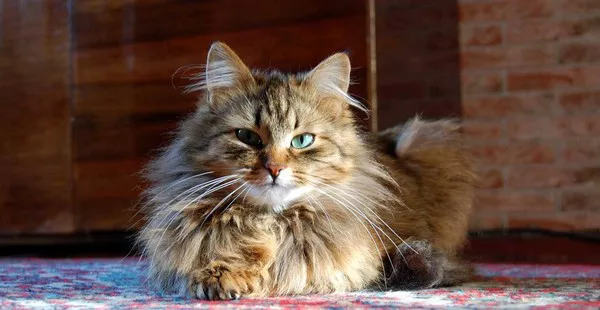Norwegian Forest Cats, often referred to as “Wegies,” are majestic and enchanting feline companions known for their striking appearance and friendly demeanor. As cat enthusiasts consider bringing these regal creatures into their homes, one of the primary concerns that arise is shedding. In this comprehensive article, we delve into the shedding habits of Norwegian Forest Cats, exploring the factors that influence their fur dynamics and offering practical insights for prospective owners.
Understanding the Norwegian Forest Cat
Physical Characteristics
The Norwegian Forest Cat is a breed with deep-rooted historical significance, believed to have originated in the Scandinavian forests. These cats are renowned for their robust and large build, featuring a distinctive double coat that insulates them against harsh weather conditions. The outer coat is long, glossy, and water-resistant, while the dense undercoat provides additional insulation.
Shedding Patterns and Seasons
Norwegian Forest Cats follow a shedding pattern influenced by both environmental factors and their unique biology. Like many other cat breeds, they undergo a shedding process known as molting. However, the frequency and intensity of shedding can vary based on factors such as age, health, and climate.
Typically, Norwegian Forest Cats experience a more pronounced shedding phase during seasonal changes, particularly in the spring and fall. During these times, they shed their winter and summer coats, respectively, to adapt to the prevailing temperatures. This shedding cycle helps regulate their body temperature and maintain a healthy coat.
Factors Influencing Shedding
1. Genetic Predisposition
Genetics play a pivotal role in determining the shedding characteristics of Norwegian Forest Cats. The breed’s ancestral lineage, adapted to the Nordic climate, has equipped them with a coat that naturally sheds less than some other long-haired breeds. However, individual cats may still display variations in shedding based on their specific genetic makeup.
2. Age and Developmental Stages
The shedding patterns of Norwegian Forest Cats can evolve as they progress through different life stages. Kittens may have a different shedding profile compared to adult cats, and the transition between kittenhood and adulthood can influence the intensity and frequency of shedding.
3. Nutritional Considerations
A well-balanced diet is crucial for the overall health of any cat, including Norwegian Forest Cats. Nutrition directly impacts the quality of their coat and skin. A diet rich in essential fatty acids and nutrients contributes to a healthy coat, minimizing excessive shedding. Understanding the dietary requirements of Norwegian Forest Cats can help owners address potential shedding issues proactively.
4. Grooming Practices
Regular grooming is essential for managing shedding in Norwegian Forest Cats. While these felines are known for their self-grooming habits, they can benefit from additional grooming sessions provided by their owners. Brushing their luxurious coats helps remove loose fur, preventing it from accumulating and forming mats.
Effective Shedding Management Strategies
1. Regular Brushing Routine
Establishing a consistent brushing routine is key to managing shedding in Norwegian Forest Cats. Using a high-quality cat brush, owners can gently remove loose fur from the coat, reducing the likelihood of excessive shedding. Brushing also promotes healthy skin and stimulates blood circulation.
2. Balanced Nutrition
Ensuring that Norwegian Forest Cats receive a nutritionally balanced diet is essential for maintaining a healthy coat. Consultation with a veterinarian can help determine the specific dietary needs of individual cats, taking into account factors such as age, weight, and overall health.
See Also:When do norwegian forest cats stop growing?
3. Seasonal Adjustments
Recognizing and adapting to the seasonal shedding patterns of Norwegian Forest Cats is crucial for effective shedding management. During peak shedding seasons, owners may need to increase the frequency of grooming sessions to keep loose fur in check.
4. Veterinary Consultation
If excessive shedding persists or if owners notice any irregularities in their cat’s coat, seeking professional advice from a veterinarian is imperative. Underlying health issues, such as allergies or skin conditions, can contribute to abnormal shedding and require prompt attention.
Conclusion
In conclusion, Norwegian Forest Cats are captivating companions with a distinctive double coat that enhances their majestic appearance. Understanding the shedding patterns and implementing proactive management strategies are crucial aspects of responsible ownership. By considering factors such as genetics, age, nutrition, and grooming practices, owners can ensure that their Norwegian Forest Cats maintain healthy and lustrous coats while minimizing shedding-related concerns. With proper care and attention, these regal felines can grace households with their enchanting presence for years to come.
Related Topics:
How Big Is a Norwegian Forest Cat?
Why are norwegian forest cats called fairy cats?
Do norwegian forest cats like to cuddle?



























